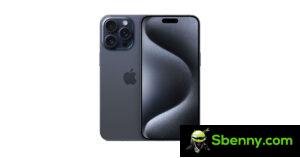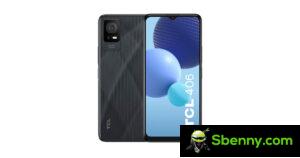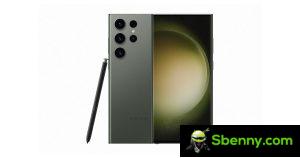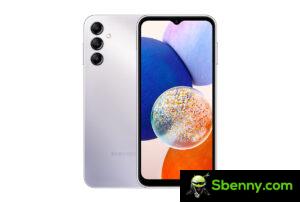We subjected the Xiaomi Redmi Note 13 Pro 5G to our rigorous SBMARK Battery test suite to measure its performance in terms of battery life, charging and efficiency. In the results of these tests, we will analyze how it performed in a series of tests and in several common use cases.
Overview
Key Specifications:
- Battery capacity: 5100mAh
- 67W charger (included)
- 6.67-inch OLED display, 1220 x 2712, 120 Hz
- Qualcomm Snapdragon 7s Gen 2 (4nm)
- Tested ROM/RAM combination: 256GB + 8GB
Pros
- Fast charging time, with a full charge completed in less than 50 minutes
- Big gain in autonomy thanks to a 5 minute charging boost
- Decent battery life when streaming videos
Against
- Poor autonomy if used outdoors
- High discharge currents in general, especially during gaming
The overall battery performance of the Xiaomi Redmi Note 13 Pro 5G was slightly above average in our database. However, due to its battery life and efficiency performance, the device failed to match the performance of its predecessor, the Xiaomi Redmi Note 12 Pro 5G.
Equipped with a 5100 mAh battery, the Xiaomi Redmi Note 13 Pro 5G offered a moderate usage battery life of 55 hours and 55 minutes, ranking slightly above average in our database. However, it faced challenges in outdoor activities, especially navigating social apps. However, its performance in individual use cases, especially when watching videos over both 4G and Wi-Fi connections, was relatively decent.
The Xiaomi Redmi Note 13 Pro 5G comes with a 67W charger, which helped the device achieve a full charge in less than 50 minutes. Additionally, a 5-minute quick charge got 5 hours and 31 minutes of additional battery life, placing the device near the top of our database.
The charging efficiency of the Xiaomi Redmi Note 13 Pro 5G is also quite decent, with 78% overall charging efficiency. However, the discharge currents in most use cases were higher than average, which lowered the efficiency score.
Compared to other devices in the Advanced segment ($200 – $399), the below-average performance in terms of efficiency and battery life of the Xiaomi Redmi Note 13 Pro 5G prevented the device from surpassing other smartphones in this category.
Test summary
Information on SBMARK battery tests: For scoring and analysis in our smartphone battery reviews, SBMARK engineers perform a series of objective tests over a period of one week both indoors and outdoors. (See our introduction and how we test articles for more details on our smartphone battery protocol.)
The following section brings together key elements of our comprehensive testing and analysis performed in SBMARK laboratories. Detailed performance evaluations in the form of reports are available upon request. Do not hesitate to contact us.
| Drums | Battery charger | wireless | Screen | Processor | |
|---|---|---|---|---|---|
| Xiaomi Redmi Note 13 Pro 5G | 5100mAh | 67W (not included) |
– | ALOMED 1220 x 2712 |
Qualcomm Snapdragon 7s Gen 2 |
| Xiaomi Redmi Note 12 Pro 5G | 5000mAh | 67W (included) |
– | AMOLED 1080 x 2400 |
MediaTek Dimensity 1080 |
| Honor X7b | 6000mAh | 35W (included) |
– | LCD screen 1080 x 2412 |
Qualcomm Snapdragon 680 |
Autonomy
117
Xiaomi Redmi Note 13 Pro 5G
195
Honor X7b
Honor X7b
How the autonomy score is composed
The battery life score is made up of three performance subscores: Home/Office, On the Go, and Calibrated Use Cases. Each subscore includes the results of a full range of tests to measure battery life in all types of real-life scenarios.
82 hours
Light usage
Active: 2h30/day
56 hours
Moderate use
Active: 4 hours a day
34 hours
Intense use
Active: 7 hours a day
Home office
118
Xiaomi Redmi Note 13 Pro 5G
221
Honor X7b
Honor X7b
A robot housed in a Faraday cage performs a series of touch-based user actions during what we call our “Typical Usage Scenario” (TUS) (making calls, streaming video, etc.) – 4 hours of active use over the course of 16 hours. -a period of one hour, plus 8 hours of “sleep”. The robot repeats this series of actions every day until the device runs out of power.
In movement
115
Xiaomi Redmi Note 13 Pro 5G
195
Samsung Galaxy M51
Samsung Galaxy M51
Using a smartphone on the move puts a strain on battery life due to additional “hidden” needs, such as the continuous signaling associated with cellular network selection. SBMARK Battery experts take the phone outdoors and perform a series of well-defined activities following the same three-hour travel itinerary (walking, taking the bus, subway…) for each device
Calibrated
115
Xiaomi Redmi Note 13 Pro 5G
198
Samsung Galaxy M51
Samsung Galaxy M51
For this series of tests the smartphone returns to the Faraday cage and our bots repeatedly perform actions related to a specific use case (such as gaming, video streaming, etc.) at a time. Starting from an 80% charge, all devices are tested until they have consumed at least 5% of their battery charge.
In charge
134
Xiaomi Redmi Note 13 Pro 5G
218
Realme GT Neo 5 (240W)
Realme GT Neo 5 (240W)
How the charging score is made up
Charging is a full part of the overall battery experience. In some situations where battery life is at its lowest, knowing how fast you can charge becomes a concern. The SBMARK Battery Charging Score is made up of two sub-scores, (1) Full Charge and (2) Quick Boost.
Full charge
129
Xiaomi Redmi Note 13 Pro 5G
224
Realme GT Neo 5 (240W)
Realme GT Neo 5 (240W)
Full charge tests evaluate the reliability of the battery charge indicator; measure how long and how much energy the battery takes to charge from zero to 80% capacity, from 80 to 100% as shown by the user interface, and until actually fully charged.
The charging curves, in wired and wireless mode (if available) show the evolution of the battery level indicator as well as the energy consumption in watts during the charging phases towards full capacity.
The time to full charge table breaks down the time needed to reach 80%, 100%, and full charge.
Quick push
139
Xiaomi Redmi Note 13 Pro 5G
212
Realme GT Neo 5 (240W)
Realme GT Neo 5 (240W)
With your phone at different charge levels (20%, 40%, 60%, 80%), the quick boost tests measure how much charge the battery receives after being plugged in for 5 minutes. The graph here compares the average battery life gain with a 5 minute fast charge.
Efficiency
106
Xiaomi Redmi Note 13 Pro 5G
154
Oppo Reno6 5G
Oppo Reno6 5G
How the efficiency score is composed
The SBMARK Energy Efficiency Score is composed of two sub-scores, Charge Rate and Discharge Rate, both of which combine data obtained during a typical robot-based usage scenario, calibrated tests, and charge rating, taking into account battery capacity of the device. SBMARK calculates the annual energy consumption of the product, shown in the graph below, which is representative of the overall efficiency during a charge and when in use.
Charge Up
131
Xiaomi Redmi Note 13 Pro 5G
205
Nubia Red Magic 7 Pro
Nubia Red Magic 7 Pro
The charging subscore is a combination of four factors: the overall efficiency of a full charge, related to the amount of energy needed to fill the battery compared to the energy the battery can provide; the efficiency of the travel adapter when it comes to transferring power from an outlet to your phone; the residual consumption when the phone is fully charged and still connected to the charger; and the residual consumption of the charger itself, when the smartphone is disconnected from it. The graph below shows the overall efficiency of a full charge in %.
Discharge
96
Xiaomi Redmi Note 13 Pro 5G
194
Apple iPhone 14 Pro
Apple iPhone 14 Pro
The discharge subscore evaluates how quickly a battery discharges during a test, which is independent of the battery’s capacity. It is the ratio between the capacity of a battery divided by its autonomy. A small capacity battery may have the same battery life as a large capacity battery, indicating that the device is well optimized, with a low discharge rate.







Start a new Thread